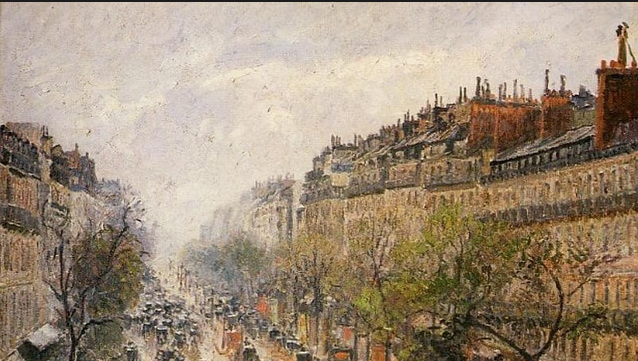During the Nazi regime, Lilly Cassirer who passed away in 1962 had been forced to give up the original Pissarro painting when she escaped Germany.
Camille Pissarro was a renowned French landscape artist who was famous for his artwork during the earlier stages of impressionism and post-impressionism. The Realist painter Gustave Courbet influenced his art.
Lily’s descendants, with Cleveland roots, are in court fighting for the return of the artwork from a Spanish museum. The case is yet to get a ruling which will in the next coming few months.
The painting is a scene of a rainy French city and is among one of the hundreds of thousands of paintings that were stolen by the Nazis.
According to Stuart Eizenstat, the adviser to the U.S. State Department as he talked to the New York Times estimates that about 600,000 paintings were stolen during the World War II era. To date, 100,000 of the paintings are still missing.
For a decade now, the Cassirer family has been fighting to repossess the painting which continues to hang in the Thyssen-Bornemisza Museum in Madrid.
Lily’s grandson, Claude Cassirer had initially sued the museum after his friend found the painting there. Claude died, and his son David and his daughter Ava took the case. However, Ava later died in March 2018.
The Madrid museum insists that the painting was acquired in good faith and Lily received compensation from the German government.
Last year, an American appeals court overturned the ruling which had allowed the museum to dismiss the complaint.
How the Cassirers acquired the painting
In 1900, the Cassirers purchased the painting from Pissarro’s agent. It stayed in the family for years hanging in Lily’s house.
However, in 1939, Lily was forced to sell it in exchange for exit visas for her and her husband. She sold it at $360, but she was not allowed to access the money.
This pushed Lily to file for restitution from the German government. She received 120,000 Deutschmarks.
After acquisition by the Nazis, the painting found its way to the U.S. in the 1950s.
Through the Stephen Hahn Gallery, Baron Hans Heinrich Thyssen-Bornemisza bought the painting in New York and kept it together with his other collections in New York. In 1993, he sold it to Spain. Later on, in 1998, he loaned his private collection to Spain as an effort to create the Thyssen-Bornemisza Museum. He later died in 2002.
Cassirer’s friend is the one who found the painting in 1999 and the legal efforts to recover it started in 2000.
Cassirer’s family ties to Cleveland
Claude, Lily’s grandson, moved to Cleveland in 1941 during summer. He met Beverly who became his wife. Before working as a renowned photographer in wedding, family portraits and bar mitzvahs, he first started working as a stock boy in a department store owned by a distant cousin.
After marrying Beverly, the daughter of Russian Jewish émigrés, he gained entry to the Jewish community of Cleveland. That’s how his career blossomed.
His grandmother, Lily came to live with him and his wife in Cleveland when her second husband died in 1957. She died five years later leaving everything she had to Claude Cassirer, even granting him the rights to the Pissarro painting if it ever resurfaced.
How did Claude find the painting?
Claude mentioned that they never lost faith if recovering the painting one day. The stories of former owners of looted treasurer that made them remain positive of recovering their treasure.
The year 2000, after Claude and his wife, were retired and had raised their two children and moved to their ranch house in San Diego was their turning point. He got a call from an old customer informing him that he had found the painting in the museum.
We all know how the recovery of lost items is a hectic process, just as how collection agencies collect a debt from defaulters as explained here https://www.crediful.com/collection-agencies/afni/. What matters is the procedure you use and not giving up especially if something is rightfully yours.
Sadly, Claude died at 89 and left his children going after the painting. Ava, Claude’s daughter, remained in Cleveland while David, her brother moved to California.
Miller, a friend to Ava, who took care of her for ten years before she died at 66 leaving Miller as the beneficiary of her estate. In the case that the court rules in their favor, any recovery will be shared between Miller and David Cassirer.
The court battle
With the legal battle going for over a decade now, the legal issues involved are whether the museum officials and the baron knew the painting’s origins.
The museum released a statement saying that they were confident the judge will rule in their favor as there were no signs of bad faith. The verdict will be delivered early spring this year.










